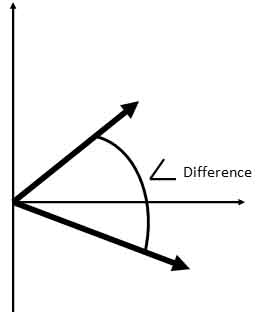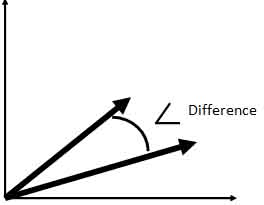1. Capacitor Motor is similar to the ______.
- Split Phase Motor
- Synchronous Motor
- DC Motor
- Compound Motor
Answer.1. Split Phase Motor
Explanation: The capacitor-start motor is essentially the same as a split-phase motor where the two windings are out of phase with each other, providing the necessary torque for starting the motor to rotate. The addition of the capacitor in series with the start winding adds to the initial torque and causes the current in that winding to lead the running winding phase voltage, obtaining a greater angle of displacement between the starting and running windings.
2. The type of capacitor used in the Capacitor start motor is
- Mica Capacitor
- Paper Capacitor
- Film Capacitor
- Electrolytic Capacitor
Answer.4. Electrolytic Capacitor
Explanation: In a capacitor start motor, the value of the capacitor is quite large, not possible with oil-filled or another type in reasonable size or economically feasible. Values can range normally anywhere from 40 mfd to 220 mfd, or even higher.
Electrolytic capacitors are cheaper and small enough for this application. However, losses in these capacitors are comparably quite high, and they get hot quickly. So they can remain in the circuit for a very short time, typically under 3 seconds, and need about 3 minutes gap before it can be reconnected. The capacitor-start motor has a low reactance electrolytic capacitor in series with the start winding. The capacitor value ranges from 150 to 180 μfd. To keep it at a reasonable size, an electrolytic type made for intermediate duty is used. It is usually mounted in a metal casing located on top of the motor.
3. In capacitor start single-phase motors
- Current in the starting winding leads the voltage
- Current in the starting winding legs the voltage
- Current in the starting winding is in phase with voltage in running winding
- None of the above
Answer.1. Current in the starting winding leads the voltage
Explanation: A capacitor motor has a capacitor in the auxiliary winding of the split-phase motor. Because of the capacitor, the starting (or auxiliary) Winding current leads the main winding current approximately by 90° in time.

On starting, the switch is closed, placing the capacitor in series with the auxiliary winding. The capacitor is of such a value that the auxiliary winding is effectively a resistive capacitive circuit in which the current leads the line voltage by approximately 45°. The main winding has enough inductance to cause the current to lag the line voltage by approximately 45°. The two field currents are therefore approximately 90° out of phase. Consequently, the fields generated are also at an angle of 90°. The result is a revolving field that is sufficient to start the rotor turning.
4. In a capacitor start motor, the phase displacement between starting and running winding can be nearly
- 10°
- 30°
- 60°
- 90°
Answer.4. 90°
Explanation: The capacitor start motor has two windings similar to the split-phase motor generally spaced 90° (electrical) from each other.
5. A capacitor-start single phase induction motor is switched on to supply with its capacitor replaced by an inductor of equivalent reactance value. It will
- Start and then stop
- Start and run slowly
- Start and run at rated speed
- Not start at all
6. In a capacitor start, a single-phase motor when the capacitor is replaced by a resistance
- Motor will consume less power
- Motor will continue to run in the same direction
- Motor may get burn
- Both 2 & 3
7. A single-phase capacitor-start motor will take starting current nearly
- Four to six times the full load current
- Three times the full load current
- Two to four times the full load current
- Same as full load current
Answer.3. Two to four times the full load current
Explanation
A capacitor-start motor has a starting torque that ranges from 225 to 400 percent of its rated full-load running torque, or roughly 2.5 times greater than a resistance-start motor.
8. The capacitors used in single-phase capacitor motors have no
- Polarity Marking
- Voltage Rating
- Dielectric medium
- None of the above
9. The direction of rotation of capacitor start motor can be changed by changing the connection of
- Running Winding
- Starting Winding
- Either Running or Starting Winding
- The direction of rotation can’t be reversed
Answer.3. Either Running or starting winding
Explanation:- The direction of rotation of the capacitor start motor can be changed by interchanging the connection of either starting or running winding.
10. Which of the following are the applications of capacitor start motor
- Refrigerator
- Compressor
- Pumps
- All of the above
Answer.4. All of the above
Explanation:-
Capacitor start motors are well suited for applications that require relatively frequent starting and hard-to-start loads, such as pumps, conveyors, and compressors used by refrigeration systems and air conditioners. They also drive machine tools that require single-phase power.


